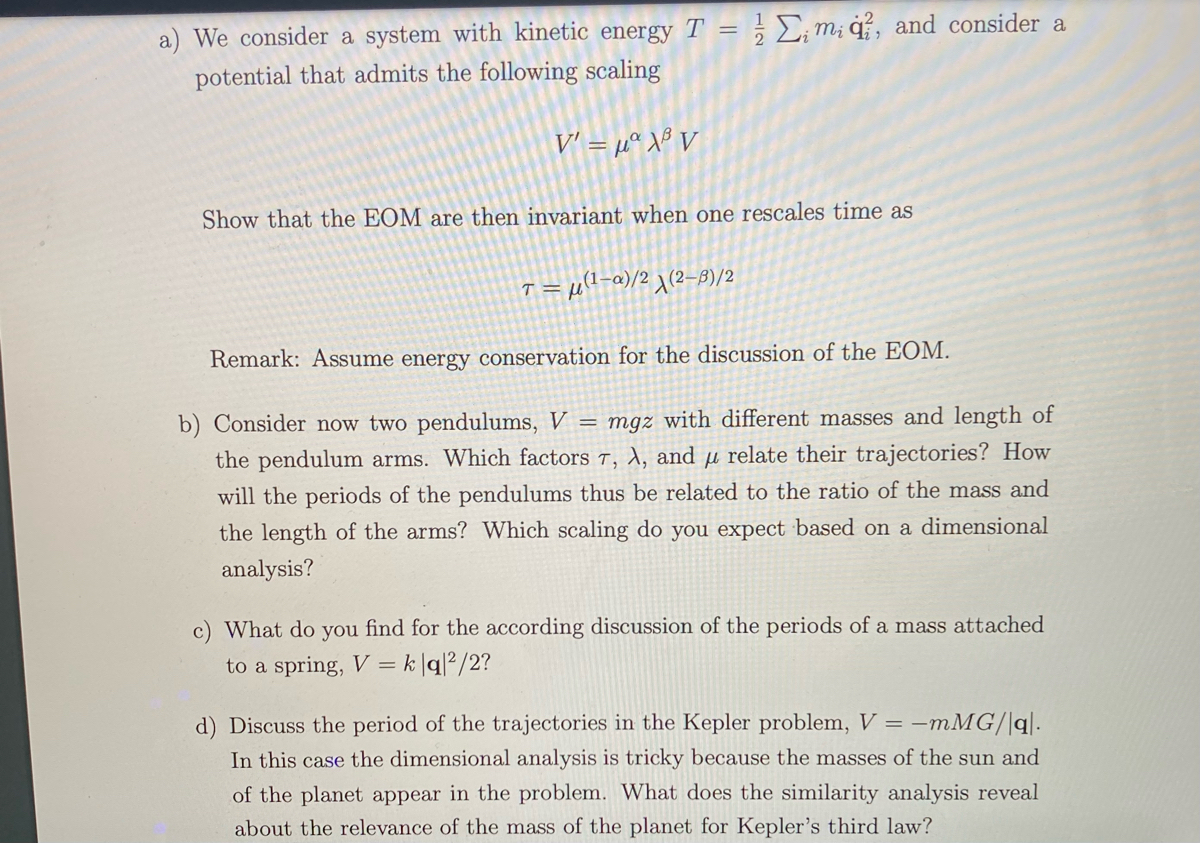please answer all parts! As detailed as possible thank you!

Extracted text: a) We consider a system with kinetic energy T = ; £;m; ġ, and consider a potential that admits the following scaling V' = µª X® V Show that the EOM are then invariant when one rescales time as -= µ(l-a)/2 1(2-8)/2 Remark: Assume energy conservation for the discussion of the EOM. b) Consider now two pendulums, V = mgz with different masses and length of the pendulum arms. Which factors T, X, and µ relate their trajectories? How will the periods of the pendulums thus be related to the ratio of the mass and the length of the arms? Which scaling do you expect based on a dimensional analysis? What do you find for the according discussion of the periods of a mass attached to a spring, V = k|q?/2? d) Discuss the period of the trajectories in the Kepler problem, V = –mMG/|q|. In this case the dimensional analysis is tricky because the masses of the sun and of the planet appear in the problem. What does the similarity analysis reveal about the relevance of the mass of the planet for Kepler's third law?